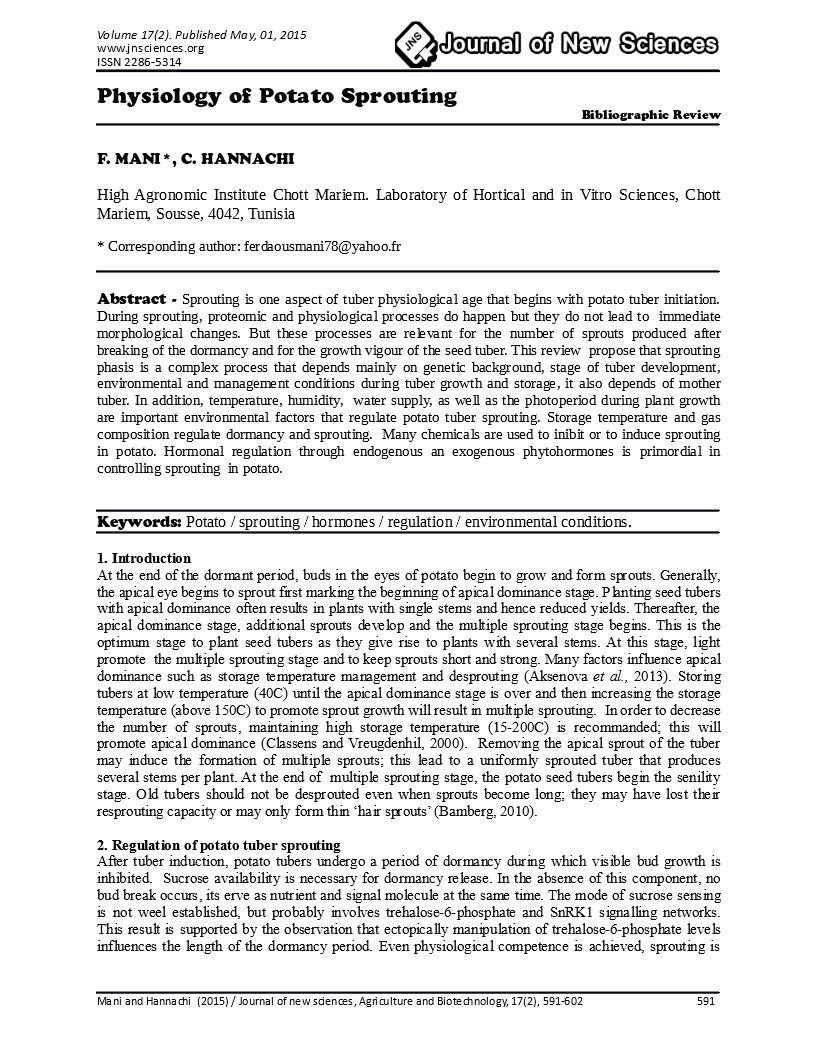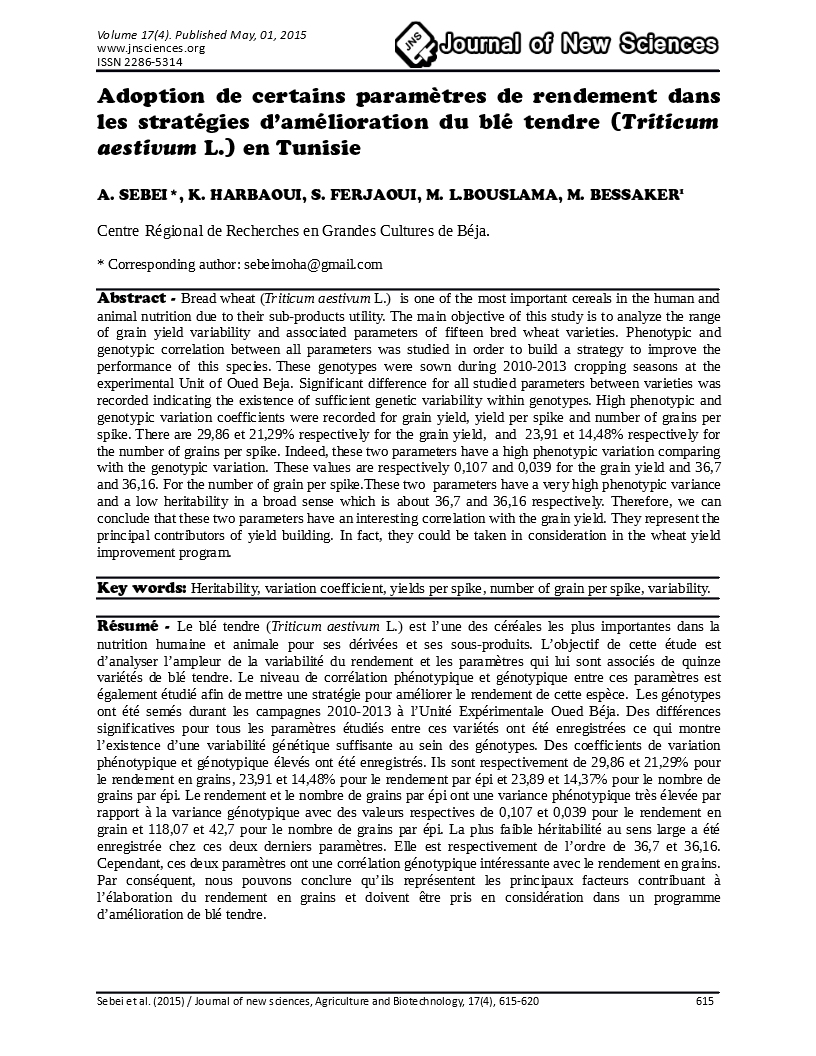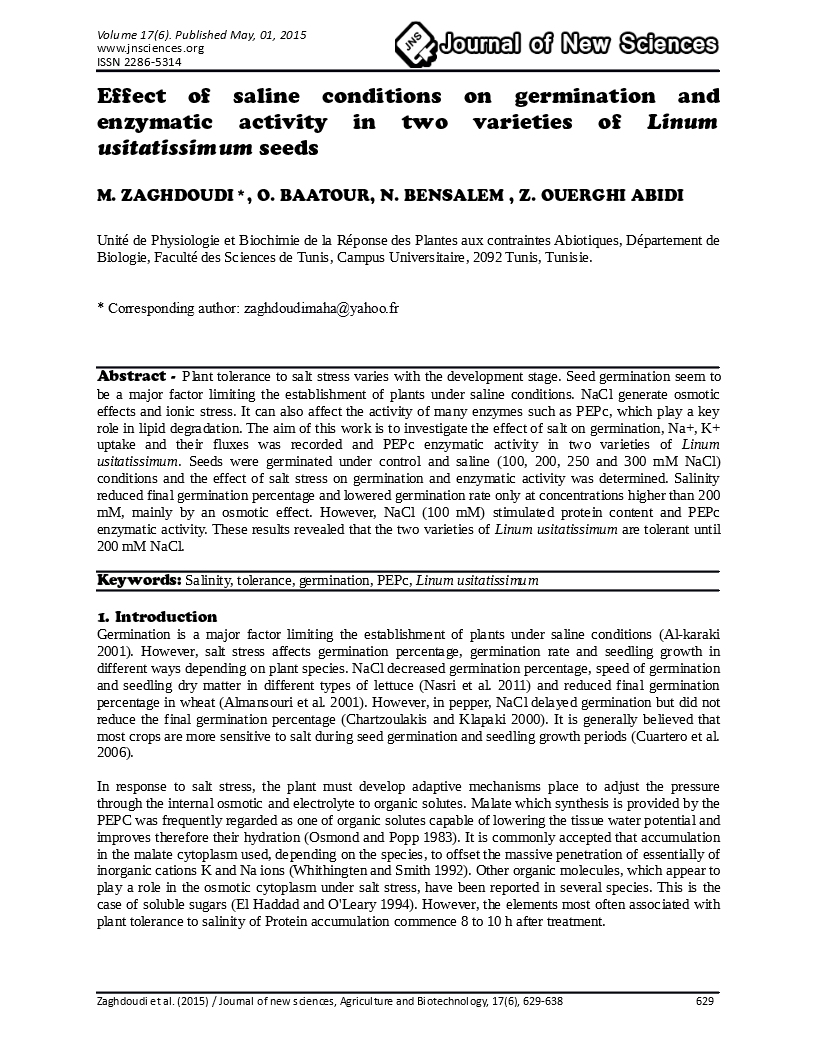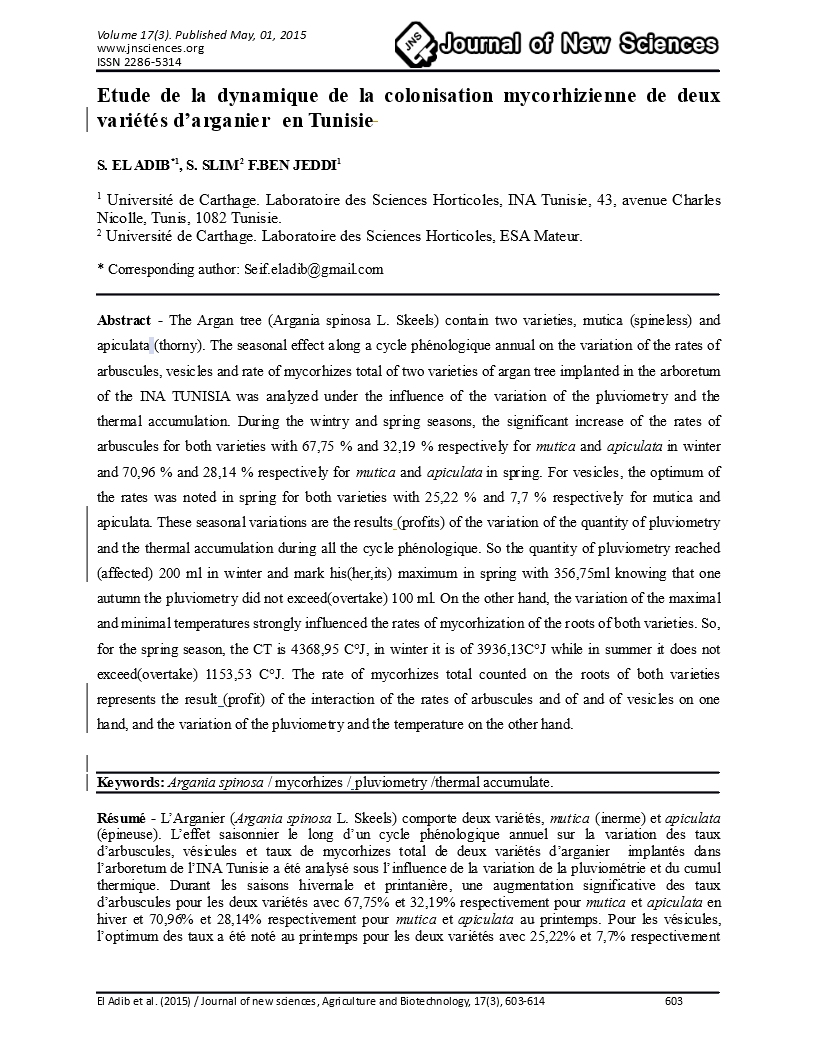- Category: Volume 17
- Hits: 14757
Liming and mineral fertilization impact on nutrition and shoot biomass of bluegrass (Poa pratensis L.)
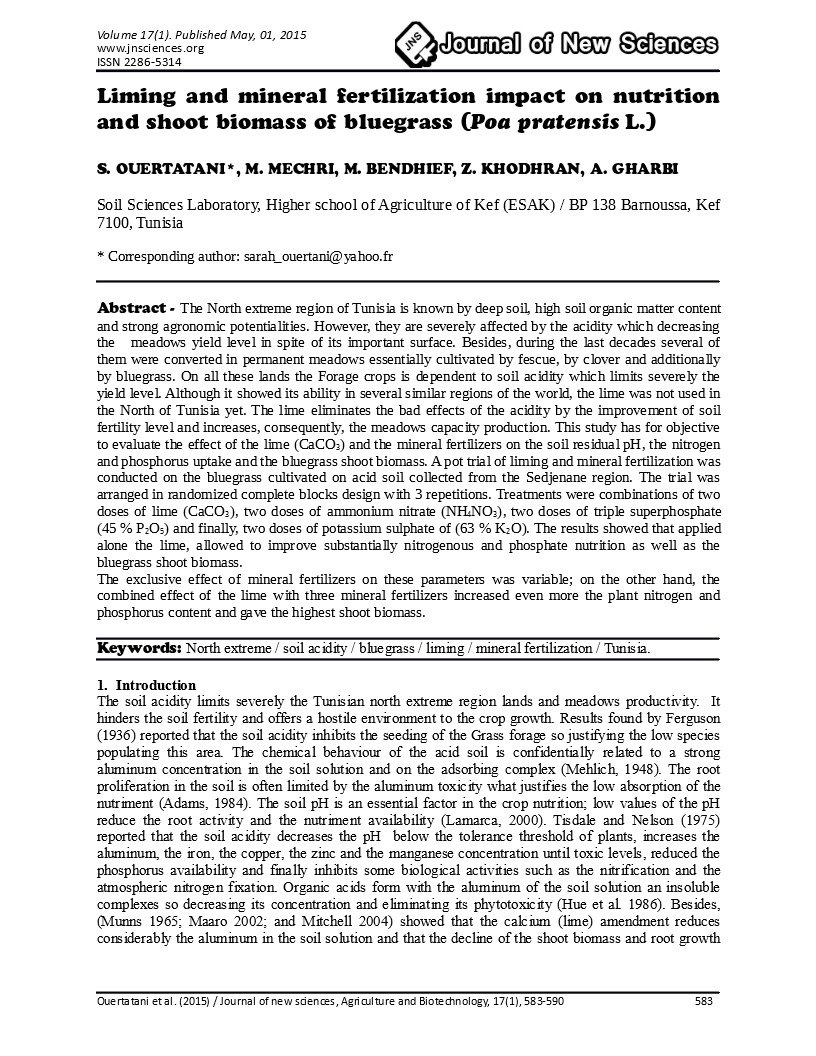
S. OUERTATANI*
M. MECHRI
M. BENDHIEF
Z. KHODHRAN
A. GHARBI
Soil Sciences Laboratory, Higher school of Agriculture of Kef (ESAK) / BP 138 Barnoussa, Kef 7100, Tunisia
Abstract - The North extreme region of Tunisia is known by deep soil, high soil organic matter content and strong agronomic potentialities. However, they are severely affected by the acidity which decreasing the meadows yield level in spite of its important surface. Besides, during the last decades several of them were converted in permanent meadows essentially cultivated by fescue, by clover and additionally by bluegrass. On all these lands the Forage crops is dependent to soil acidity which limits severely the yield level. Although it showed its ability in several similar regions of the world, the lime was not used in the North of Tunisia yet. The lime eliminates the bad effects of the acidity by the improvement of soil fertility level and increases, consequently, the meadows capacity production. This study has for objective to evaluate the effect of the lime (CaCO3) and the mineral fertilizers on the soil residual pH, the nitrogen and phosphorus uptake and the bluegrass shoot biomass. A pot trial of liming and mineral fertilization was conducted on the bluegrass cultivated on acid soil collected from the Sedjenane region. The trial was arranged in randomized complete blocks design with 3 repetitions. Treatments were combinations of two doses of lime (CaCO3), two doses of ammonium nitrate (NH4NO3), two doses of triple superphosphate (45 % P2O5) and finally, two doses of potassium sulphate of (63 % K2O). The results showed that applied alone the lime, allowed to improve substantially nitrogenous and phosphate nutrition as well as the bluegrass shoot biomass.
The exclusive effect of mineral fertilizers on these parameters was variable; on the other hand, the combined effect of the lime with three mineral fertilizers increased even more the plant nitrogen and phosphorus content and gave the highest shoot biomass.
Keywords: North extreme / soil acidity / bluegrass / liming / mineral fertilization / Tunisia.

